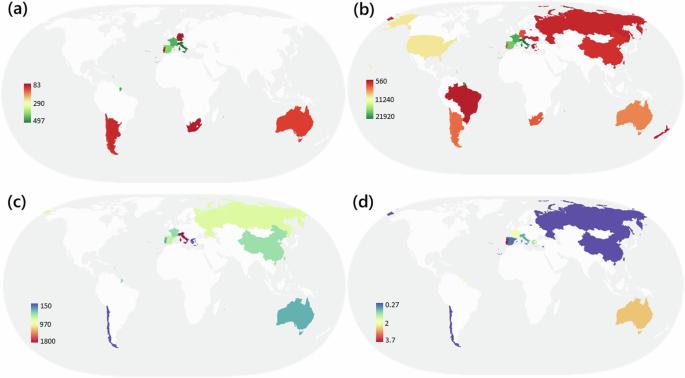Eco-innovation minimizes the carbon footprint of wine production
IF 8.1
1区 地球科学
Q1 ENVIRONMENTAL SCIENCES
引用次数: 0
Abstract
Wine industry faces significant sustainability challenges in the wake of climate change. Life cycle assessments for carbon footprint in wineries suggest that the conventional farming exhibits higher values of 0.06–3.0 kg CO2-eq bottle–1 of 750 mL wine as compared to mixed and organic farming. Life cycle assessment findings highlight that most studies often overlooked the resources in farming practices, biogenic emissions, and wastewaters in the overall reduction of winery carbon footprint. We demonstrate that the adoption of eco-innovations such as constructed wetlands and Phycosol utilize the overlooked resource loop and significantly reduce the winery carbon footprint. Empirical data analysis suggests that the use of these eco-innovative models results in 25‒30% reduction of CO2 emissions bottle–1 of 750 mL wine besides embracing Sustainable Development Goal 9, and effectively synergizing with Sustainable Development Goals 6 and 12, thus emphasizing their critical role in ensuring the sustainability of wine production. Constructed wetlands and Phycosol systems that integrate solar technologies with microalgae reduce the winery’s greenhouse gas emissions and contribute to Sustainable Development Goals, according to an analysis of data on wastewater generation, biogenic fermentation, and biomass utilization.

生态创新将葡萄酒生产的碳足迹降至最低
在气候变化的影响下,葡萄酒业面临着巨大的可持续发展挑战。对酿酒厂碳足迹的生命周期评估表明,与混合农业和有机农业相比,传统农业的碳足迹值较高,每瓶 750 毫升葡萄酒的碳足迹值为 0.06-3.0 千克二氧化碳当量。生命周期评估结果表明,大多数研究往往忽视了农业生产方式、生物排放和废水等资源对减少酒厂碳足迹的整体影响。我们证明,采用生态创新(如建造湿地和 Phycosol)可以利用被忽视的资源循环,显著减少酒厂的碳足迹。实证数据分析表明,使用这些生态创新模式可使每瓶 750 毫升葡萄酒的二氧化碳排放量减少 25-30%,不仅实现了可持续发展目标 9,还有效地与可持续发展目标 6 和 12 协同增效,从而强调了它们在确保葡萄酒生产可持续发展方面的关键作用。根据对废水产生、生物发酵和生物质利用数据的分析,将太阳能技术与微藻类相结合的建造湿地和 Phycosol 系统可减少酒厂的温室气体排放,并有助于实现可持续发展目标。
本文章由计算机程序翻译,如有差异,请以英文原文为准。
求助全文
约1分钟内获得全文
求助全文
来源期刊

Communications Earth & Environment
Earth and Planetary Sciences-General Earth and Planetary Sciences
CiteScore
8.60
自引率
2.50%
发文量
269
审稿时长
26 weeks
期刊介绍:
Communications Earth & Environment is an open access journal from Nature Portfolio publishing high-quality research, reviews and commentary in all areas of the Earth, environmental and planetary sciences. Research papers published by the journal represent significant advances that bring new insight to a specialized area in Earth science, planetary science or environmental science.
Communications Earth & Environment has a 2-year impact factor of 7.9 (2022 Journal Citation Reports®). Articles published in the journal in 2022 were downloaded 1,412,858 times. Median time from submission to the first editorial decision is 8 days.
 求助内容:
求助内容: 应助结果提醒方式:
应助结果提醒方式:


